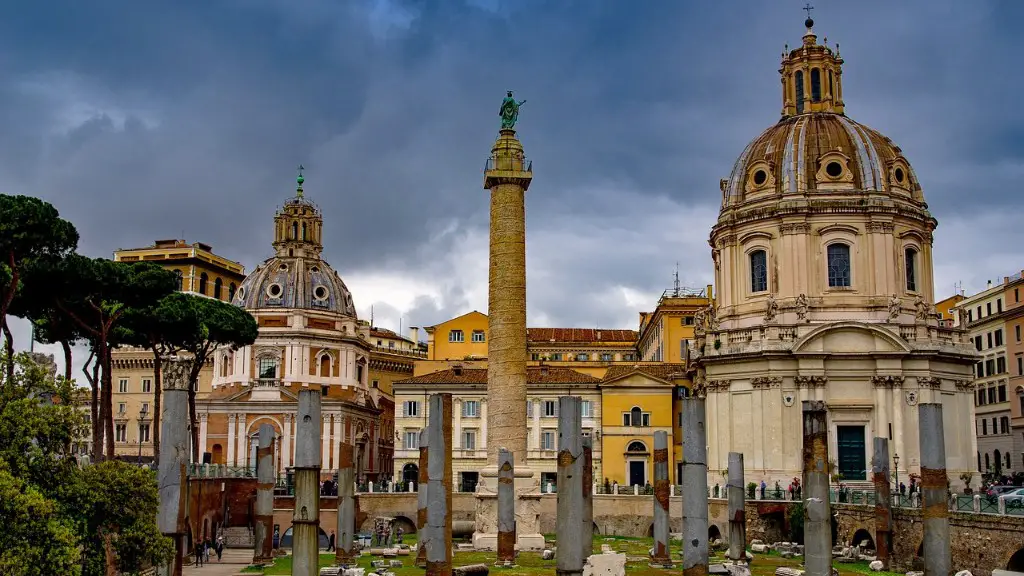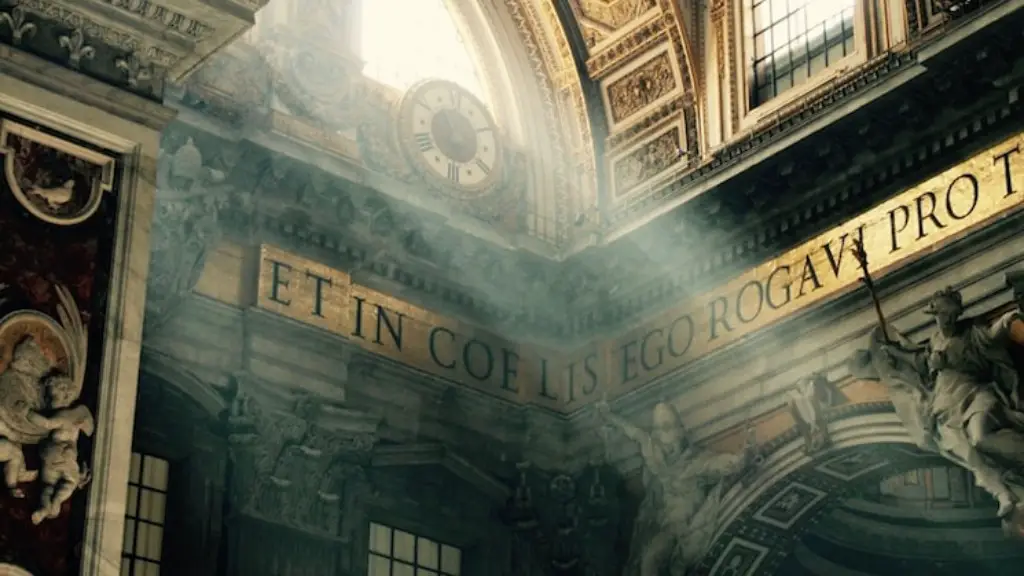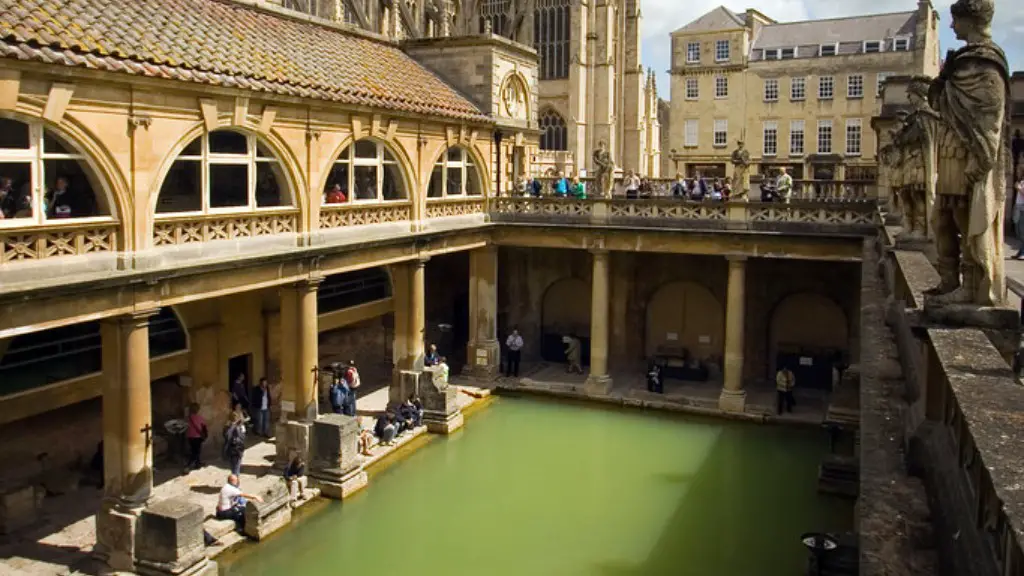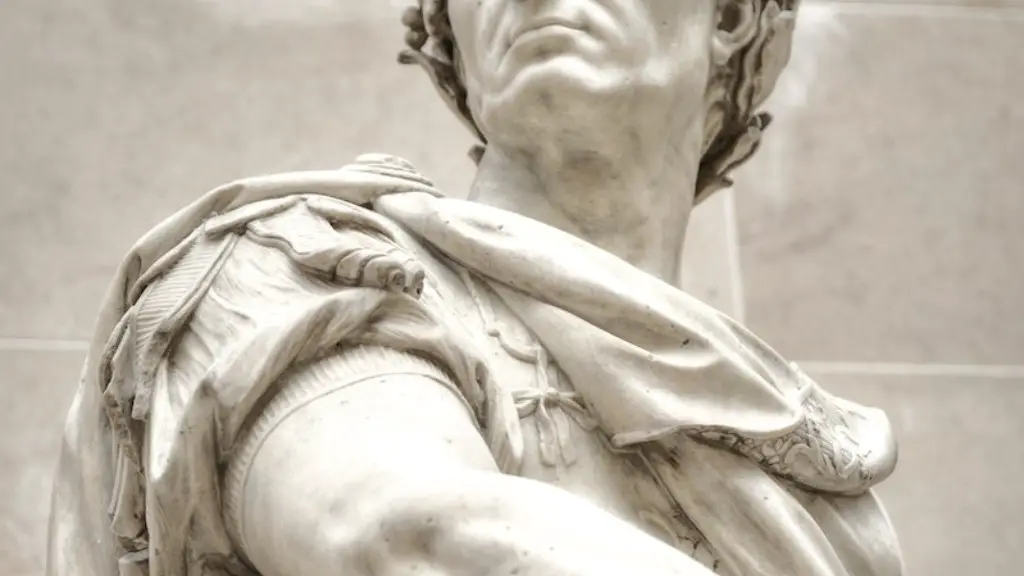In Ancient Rome, candles were used to light up homes and as a source of religious ceremony. Candles provided illumination and also a convenient form of time-keeping in homes and public spaces. Candles have played an important role in many cultures, spanning centuries and continents. Today, candles remain a popular choice for lighting homes and religious ceremonies, and often, the materials used to make them have the same origins as those used in the time of Ancient Rome.
In Ancient Rome, wax was, by far, the primary material used to make candles. Beeswax was the most plentiful, and it was a common commodity to traders. Candles made of this wax provided a bright, clean flame and were affordable for most people.
Animal fat, also known as tallow, was another material used to make candles in Ancient Rome. This waxy material was available in abundance and was derived from cows, sheep, and sometimes pigs. While much less vibrant than its beeswax counterpart, tallow candles offered a long-burning flame with strong light that was favored for religious ceremonies.
Tallow was also used to make torches, which were used in many ceremonies. The fat would be stored in casks and heated until it liquified, then poured into hollow sticks that were set onto poles. The burning tallow could last some time, providing a longer lasting light source than candles.
Candles were also made of rolled sphagnum moss, a waterproof, spongy material used to soak up excess fat or wax. Twine and plant material could also be found in Ancient Roman candles. In many cases, these materials were chosen over more expensive wicks due to the expense of beeswax and tallow, and their less intense light.
Due to their cost-effective nature, candles made from sphagnum moss were popular in Ancient Rome. Compared to oil lamps, candles were cheaper and more convenient, requiring less clean-up and maintenance. The only disadvantage of sphagnum moss candles was the lack of light intensity, but for most needs, such as lighting pathways and providing a soft light during meals and religious ceremonies, the candles provided enough illumination.
Today, we still use most of the same materials used in Ancient Roman candles. Beeswax, tallow, and sphagnum moss can still be found in stores, and are still used to make candles that still hold up their end of the bargain – providing a soft, long-burning flame.
Uses in Ancient Rome
Candles were used for various purposes in Ancient Rome. They were mainly used for light, either for small occasions or for ritual sacrifices. There were also various religious ceremonies where candles were needed. Candles were also used in art and culture, as artists and performers used them as props. Finally, candles were used for decoration purposes, both inside and outside of homes.
Overall, candles were mostly a status symbol in Ancient Rome. Wealthy citizens could afford more decorative and scented candles. Whereas the poorer citizens made their candles at home. This was mainly done using the fat rendering of a pig and the fat of the sheep. In the higher classes, candles were made of beeswax and tallow, while in the lower classes, candles were made of fat and sphagnum moss.
Rituals were quite common back then, and candles often featured as an offering or sacrifice. Post-dinner dinners in the home, ceremonies in the temples, ceremonial entrances of the emperor and his advisors, and generally the stage theater were some of the events where candles were used.
In Ancient Rome, one could expect to find candles in windows, entrances and alters. Candlelight dinners were important back then, so the lighting of candles at dinner was a frequent occurrence. Since gas lighting was quite rare then, and oil lamps were mainly used in outdoor activities such as fishing and hunting, candles were mainly used for interior illumination.
Candlestick Design
In order to hold the candles, the Ancient Romans made use of candlesticks, which were designed with practicality and beauty in mind. Candlesticks were either carved in the shape of a standing figure, such as the deer, or in the form of an amphora or rectangular box that held a number of candles. Wooden, marble, and bronze were the main materials used to make the candlesticks in Ancient Rome. During religious ceremonies, candlesticks made of gold were also abundant.
Many of these large candlesticks were decorated with columns, animals, or wings on the sides. Most also had a base beneath the holder, decorated in relief with symbols such as men riding horses or other figures that were symbolic of power and majesty.
These candleholders were importance artifacts in Ancient Rome, and their design was completely different from the modern-day candleholders. Also, candles were mainly used indoors in Ancient Rome, which made for a completely different atmosphere when compared to the outside lighting offered by oil lamps.
Candle-making
Making candles was a delicate process in Ancient Rome. Tallow and beeswax were melted and then poured into a fixed size container, before allowing the wax to harden and set. The wick was then fixed in the center, which was usually twisted cotton or linen threads. After that, the wick was dipped in the wax and shaped into a cylinder.
Then the wax was slowly poured over the top, creating a spiral like formation on the surface. As the wax cooled down, the shape was compacted and solidified into a candle. These candles usually had a lifespan of 1-2 hours, and so had to be replaced during the night, or if the candleholder was not around, it was simply snuffed out.
It is clear that candle-making in Ancient Rome was a detail-oriented and intricate job. The materials had to be carefully chosen and the process had to be safe and precise, as candles were widely used for illumination. The resulting candles were of great value and had to be constantly Renewed.
Religious Use
Candles also had a significance to many Ancient Roman religions. In Roman mythology, the goddess Vesta was born out of the flame of a candle, and she became the goddess of the hearth and of home. Candles were also used to represent the fire of the gods and held a religious significance.
The use of candles in Ancient Roman households often took place during religious occasions, such as making offerings to the gods. Religious festivals were often marked by candlelight, as were funerals and marriage ceremonies. Candles often took on a spiritual importance in many religions, and were used to invoke the gods and ward off evil spirits.
Candles were also the main source of light for many religious ceremonies. The flicker of the flame was often seen to represent the passage of time and the cycle of life. Candles were lit during services as an offering and prayer to the gods, and as an expression of reverence and devotion.
Candles were also frequently used to symbolize life and death. During funerals, candles were lit to bid farewell to the deceased, while during baptisms, they were lit to embrace the new life coming into the world.
Symbolism
Candles were more than just a source of illumination – they were symbols of hope, love, devotion, and faith. During difficult times, a lit candle could be a symbol of courage, and offered a sense of security in the face of danger and death. The sacrifices, ceremonies, and rituals in Ancient Rome were always accompanied by candles, whether it was at the funeral of a loved one, or in the temple where prayers were offered.
Candles were also seen as symbols of power. In Ancient Rome, the emperor was often represented by a large golden or white candle, symbolizing his divine rule and power. Candles were used to give thanks and offer gratitude to the gods, and were seen symbols of the divine light.
Candles were also powerful symbols in nature. For example, some Ancient Roman motifs depicted a burning candle surrounded by swallows, representing the cycle of dawn, twilight, and night. Swallows flew around the flame, symbolizing the passage of time and the infinite lasting love of God and nature.
Legacy
The legacy of the Ancient Roman candle is still seen today. In many cultures, candles are still used in rituals, ceremonies, and celebration. Candles are also still used in religious celebrations throughout the world, often in the same manner as they were used thousands of years ago.
Many of the materials used to make candles in Ancient Rome are still used today. Beeswax and tallow are still the most common materials used in candle-making, as are sphagnum moss and various plant materials. Candles also still provide a form of illumination in homes, churches, and other religious spaces.
In short, Ancient Roman candles have had a deep and lasting impact on the world today. The materials used were highly sought after, and the craftsmanship that went into making the candles was a sign of skill and dedication. It is clear that some of the same rituals, ceremonies, and cultural functions that surrounded candles in Ancient Rome still exist in some form today.





